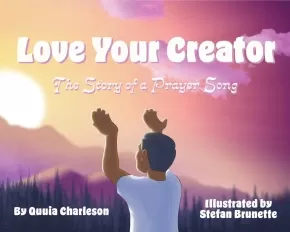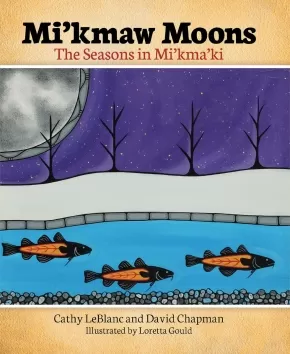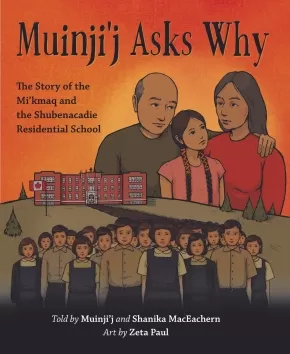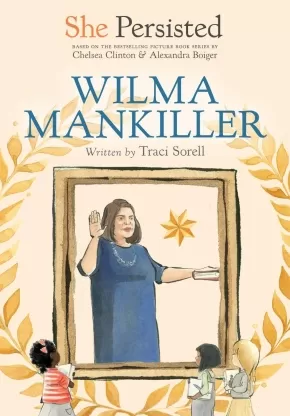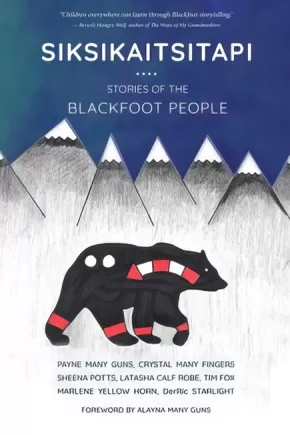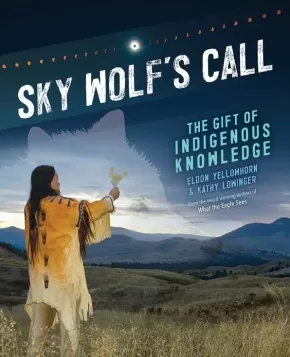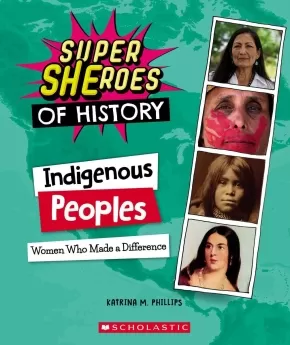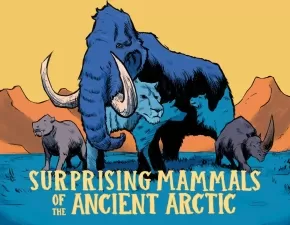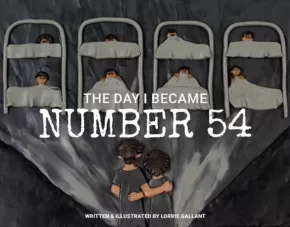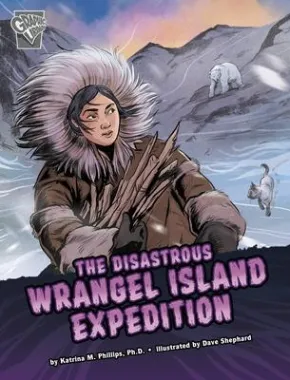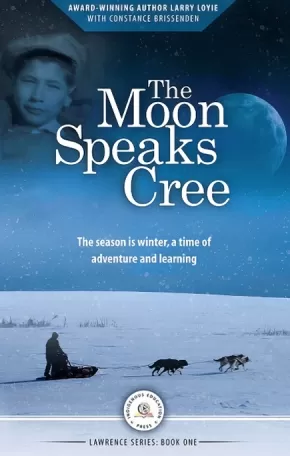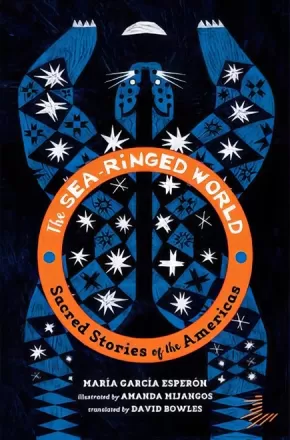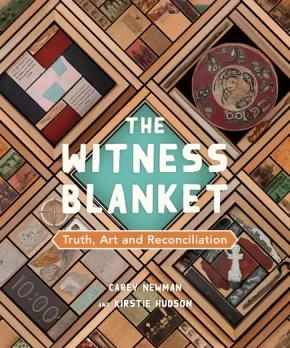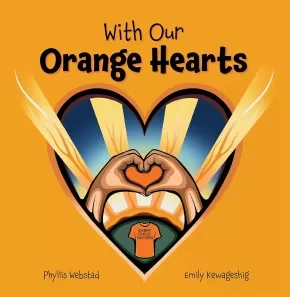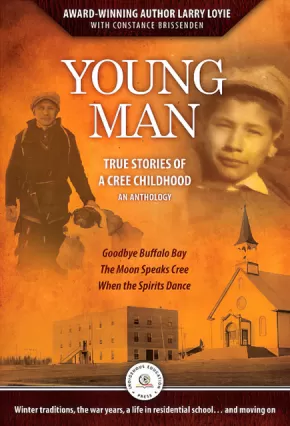
History
76
-
90
of
195 Results;
Sort By
Go To
of 13
Love Your Creator: The Story of a Prayer Song
$20.95
Artists:
Format:
Paperback
Text Content Territories:
Indigenous Canadian; First Nations; Nuu-chah-nulth (Nootka); Hesquiaht;
ISBN / Barcode: 9781777894726
Synopsis:
Synopsis:
This is the true story behind a song that was once a hymn remembered from residential school. With the help of his family and community, especially the determination of his son, and encouraging words of his Grandmother, Knowledge Keeper Quuia Charleson (Nuu-Chah-Nulth), has reclaimed Love Your Creator and continues to share both the song and its story through oral tradition at events and on travels. Engaging illustrations by Stefan Brunette passionately portray the people and events in this exciting picture book for all ages. Discover the story and learn the strength of a song.
Educator Information
Recommended for ages 5 to 12.
This book is available in French: Aime ton Créateur: L'histoire d'une chanson de prière.
Additional Information
36 pages | 10.00" x 8.00" | Paperback
Mi'kmaw Moons: The Seasons in Mi'kma'ki
$24.95
Artists:
Format:
Paperback
Text Content Territories:
Indigenous Canadian; First Nations; Mi'kmaq;
ISBN / Barcode: 9781459507036
Synopsis:
Synopsis:
Traditional teachings about the moon cycles and their relation to the natural history of Mi’kma’ki on Canada’s East Coast.
For thousands of years, the Mi’kmaq have been closely observing the natural world and the cycles of the moon and the stars to track the passage of time. Each full moon in an annual cycle was named by the Mi’kmaq to relate to a seasonal event, such as tomcod spawning, birds laying eggs or berry ripening.
For the past decade, Mi’kmaw Elders and Knowledge Keepers have shared stories of the traditional night sky calendar with authors Cathy LeBlanc and David Chapman. In this book, Cathy relays these stories in her role as Auntie to her young relation Holly.
Each moon’s story is richly illustrated with an evocative colour painting created for this book by the noted Mi’kmaw artist Loretta Gould.
Alongside this presentation of the Mi’kmaw time-keeping traditions, this book offers a brief history of the modern Western calendar, and some basic astronomy facts about the moon’s phases and why the seasons change.
This two-eyed seeing approach takes young readers on a journey through one full year in Mi’kma’ki.
Educator Information
Juvenile fiction.
Includes some Mi'kmaw words.
A board book version is available here: Mi’kmaw Moons: A First Lunar Calendar.
Additional Information
56 pages | 11.02" x 9.01" | Paperback
Muinji'j Asks Why: The Story of the Mi'kmaq and the Shubenacadie Residential School
$22.95
Artists:
Format:
Paperback
Text Content Territories:
Indigenous Canadian; First Nations; Mi'kmaq;
ISBN / Barcode: 9781774710470
Synopsis:
Synopsis:
An educational and heartfelt retelling of the story of the Mi'kmaq and their traditional lands, Mi'kma'ki, for young readers, focused on the generational traumas of the Indian Residential School System.
"The story of the Mi'kmaw people is one that very few truly know, Ladybug. Even fewer understand what happened at the residential schools. It is a hard story to tell, but you must know the truth. Sit and I will tell you the story."
When seven-year-old Muinji'j comes home from school one day, her Nana and Papa can tell right away that she's upset. Her teacher has been speaking about the residential schools. Unlike most of her fellow students, Muinji'j has always known about the residential schools. But what she doesn't understand is why the schools existed and why children would have died there.
Nana and Papa take Muinji'j aside and tell her the whole story, from the beginning. They help her understand all of the decisions that were made for the Mi'kmaq, not with the Mi'kmaq, and how those decisions hurt her people. They tell her the story of her people before their traditional ways were made illegal, before they were separated and sent to reservations, before their words, their beliefs, and eventually, their children, were taken from them.
A poignant, honest, and necessary book featuring brilliant artwork from Mi'kmaw artist Zeta Paul and words inspired by Muinji'j MacEachern's true story, Muinji'j Asks Why will inspire conversation, understanding, and allyship for readers of all ages.
Educator Information
Juvenile Nonfiction
Additional Information
40 pages | Paperback
She Persisted: Wilma Mankiller
$7.99
Format:
Paperback
Text Content Territories:
Indigenous American; Native American; Cherokee; Cherokee Nation (Cherokee Nation of Oklahoma);
ISBN / Barcode: 9780593403051
Synopsis:
Synopsis:
The descendant of Cherokee ancestors who had been forced to walk the Trail of Tears, Wilma Mankiller experienced her own forced removal from the land she grew up on as a child. As she got older and learned more about the injustices her people had faced, she dedicated her life to instilling pride in Native heritage and reclaiming Native rights. She went on to become the first woman Principal Chief of the Cherokee Nation.
In this chapter book biography by award-winning author Traci Sorell, readers learn about the amazing life of Wilma Mankiller--and how she persisted.
Complete with an introduction from Chelsea Clinton, black-and-white illustrations throughout, and a list of ways that readers can follow in Wilma Mankiller's footsteps and make a difference!
Educator Information
Recommended for ages 6 to 9.
This book is part of the She Persisted series, a chapter book series about women who spoke up and rose up against the odds.
Additional Information
80 pages | 5.31" x 7.63" | Paperback
Siksikaitsitapi: Stories of the Blackfoot People
$37.50
Text Content Territories:
Indigenous Canadian; First Nations; Blackfoot Confederacy (Siksikaitsitapi); Piikani (Peigan, Aapatohsipikani); Kainai (Blood); Siksika (Blackfoot);
ISBN / Barcode: 9781988824833
Synopsis:
Synopsis:
In Siksikaitsitapi: Stories of the Blackfoot People, seven authors share their stories that come from both from legend and from their personal experiences, with many of the stories in both Blackfoot and English languages. The book is illustrated with beautiful full-colour pictures and photos which help convey these stories from Blackfoot traditional and contemporary traditions and cultures. The Blackfoot Confederacy is made up of the Siksika, Kainai, Piikani, and Amskapi Piikuni Nations of Southern Alberta and Montana.
Payne Many Guns' story captures the ways the Blackfoot People live in harmony with the land, animals, and stars in their traditional lands.
Crystal Many Fingers tells a delightful, modern story about animals, their gifts, and why they were put on Earth.
Sheena Potts' story beautifully illustrates the many ways love is alive in Blackfoot traditions and culture.
Tim Fox tells a humerous story about mice who are having a celebration that the raven Napi and a group of dogs want to join.
Marlene Yellow Horn shares her personal story of the teachings she learned as a child about the Elders' traditional and sacred knowledge.
DerRic Starlight tells the tale of Morning Star's diverse and loving family life.
Foreword is by Alayna Many Guns.
Educator & Series Information
The publisher recommends this title for grades 6 to 12, but these stories will appeal to children of all ages.
This book is part of the Indigenous Spirit of Nature series.
"These Blackfoot children’s book chapters share common knowledge stories which have been shared to our authors. Common knowledge includes everyday lessons and norms. The book provides us with an opportunity to reclaim our truths. In the past, sitting with an Elder and listening to traditional stories of the stars, the animals, Napi, and our purpose was a great gift. Today, this is more important than ever. Elders gift us with purpose, strength, knowledge, and love." - Alayna Many Guns, from the foreword
Additional Information
144 pages | 6.00" x 9.00" | Colour illustrations | Paperback
Sky Wolf's Call: The Gift of Indigenous Knowledge
$16.95
Format:
Paperback
Text Content Territories:
Indigenous Canadian; Indigenous American;
ISBN / Barcode: 9781773216294
Synopsis:
Synopsis:
From healing to astronomy to our connection to the natural world, the lessons from Indigenous knowledge inform our learning and practices today.
How do knowledge systems get passed down over generations? Through the knowledge inherited from their Elders and ancestors, Indigenous Peoples throughout North America have observed, practiced, experimented, and interacted with plants, animals, the sky, and the waters over millennia. Knowledge keepers have shared their wisdom with younger people through oral history, stories, ceremonies, and records that took many forms.
In Sky Wolf’s Call, award-winning author team of Eldon Yellowhorn and Kathy Lowinger reveal how Indigenous knowledge comes from centuries of practices, experiences, and ideas gathered by people who have a long history with the natural world. Indigenous knowledge is explored through the use of fire and water, the acquisition of food, the study of astronomy, and healing practices.
Reviews
"An authoritative tribute to Indigenous knowledge systems that's a must-have for every library and classroom." - Kirkus Reviews
“Sky Wolf’s Call has an astoundingly broad scope introducing Indigenous Traditional Ecological Knowledge (TEK) in North America from time immemorial to the current day … This fast paced celebration of Indigenous innovation and technology is riveting.” - The British Columbia Review
Educator Information
Interest Age: 11+
Grade: 6+
Reading Age: 11+
A Junior Library Guild Gold Standard Selection
Table of Contents
Author’s Note
1: Sky Wolf’s Call: The Gift of Indigenous Knowledge: Foundational ideas behind Indigenous Knowledge and the importance of retaining, maintaining, and learning this sacred knowledge.
2: Water Knowledge Ways: Water links us all and is sacred. Indigenous people have fought to protect the gift of water from harm, and the critical role it has played in transportation, agriculture, irrigation, and food.
3: Fire and Smoke Knowledge: Fire and smoke are great gifts, including the burning of tobacco. In sacred ceremonies, smoke connects our breath with the heavens. Fire cooks our food, helps grow our crops, and even keeps our waters clean. Cultural burns are used to benefit the land.
4: Indigenous Knowledge and Food Security: Sharing, growing, and receiving food with family, community, and visitors is both an honour and a tradition. By understanding the traditional practices of salmon fishing, clam gardens, planting and harvesting certain crops, or hunting buffalo, Indigenous Peoples have respected what Mother Earth has to offer.
5: Healing Knowledge Ways: The use of the medicine wheel and the sweat lodge have been used over centuries and still help sick and troubled people. Games such as lacrosse and chunkey have helped in building individual strength and community spirit. And braiding together Indigenous healing and western science has opened new learning opportunities.
6: Sky Knowledge: From the earliest Indigenous astronomers to modern astrophysicists, these sky watchers have studied the sacred gifts of the sky: the sun, moon, planets, and stars that have produced maps, calendars, beliefs about how to govern, and even directions for building homes.
7: Keeping the Knowledge: Indigenous People hold oral narratives in high esteem because that was the way knowledge passed from one generation to the next. People in North America recorded important events with symbols, pictographs (paintings), and petroglyphs (carvings). Language Keepers and Knowledge keepers are making sure that Indigenous knowledge is never forgotten.
8: Sky Wolf’s Call: Indigenous knowledge is based on the idea that this world is a gift. Understanding the idea of connections (the skies with the earth, people with animals, the practical with the spiritual) is an important lesson with the challenges of climate change, pandemics, and wars. The wisdom of Indigenous Knowledge can help the whole world.
Thanks and Acknowledgments
Glossary
Selected Reading
Sources and Contacts
Additional Information
120 pages | 7.50" x 9.25" | Paperback
Super SHEroes of History: Women Who Made a Difference (Indigenous Peoples)
$9.99
Format:
Paperback
Text Content Territories:
Indigenous American; Indigenous Canadian;
ISBN / Barcode: 9781338840742
Synopsis:
Synopsis:
Meet the Super SHEroes of History, the women who have shaped history and society since ancient times.
Indigenous women were prominent members of their communities long before Europeans reached North America. When the newcomers arrived, they played a key role in holding their communities together in the face of social turmoil. Some joined male warriors to fight European settlement, while others such as Nanyehi/Nancy Ward argued that the two peoples could coexist peacefully. Indigenous women led political and legal fights to preserve their traditional rights throughout the 20th century and still do so today. Some became active campaigners in numerous causes, especially in the struggle to protect sacred lands from construction. This book tells their stories and describes their vital contributions.
Educator Information
Recommended for ages 8 to 12.
Additional Information
48 pages | 7.12" x 8.37" | Paperback
Surprising Mammals of the Ancient Arctic - Nunavummi Reading Series
$22.95
Artists:
Format:
Hardcover
ISBN / Barcode: 9781774505489
Synopsis:
Synopsis:
Explore the ancient Arctic and the incredible creatures that lived there in this fact-filled, colourful read!
What kinds of animals used to live in the Arctic? You might not think of camels, elephants, and lions as Arctic animals, but the ancestors of these animals once roamed the North long ago. As a follow-up to our Ancient Arctic Mammals book, this book features mammals you wouldn’t expect to find in the Arctic. Learn all about these surprising ancient Arctic mammals!
The thrilling and mysterious world of the ancient Arctic is brought to life with dynamic, action-packed illustrations of larger-than-life creatures.
Educator & Series Information
Recommended for ages 7 to 9.
This book is part of the Nunavummi Reading Series, a Nunavut-developed series that supports literacy learning while teaching readers about the people, traditions, and environment of the Canadian Arctic. It is a Level 13 book in the series.
Nunavummi Reading Series books have also been officially levelled using the Fountas & Pinnell Text Level Gradient™ Levelling System. This book's F&P Level is O.
Additional Information
36 pages | 9.00" x 7.00" | Hardcover
The Day I Became Number 54
$22.99
Artists:
Format:
Paperback
Text Content Territories:
Indigenous Canadian; First Nations; Haudenosaunee (Iroquois);
ISBN / Barcode: 9781990297182
Synopsis:
Synopsis:
Lorrie Gallant from Six Nations of the Grand River Territory, Cayuga Nation, Turtle Clan, retells the story of Dawn V. Hill’s experiences in residential school in the book, The Day I Became Number 54. Life was happy and carefree for Dawn and her family then she and her siblings went to residential school and everything changed. She was separated from her siblings, numbers were put on everything, and everyone had to line up. Survival was key. This compelling story was written to let everyone know the truth about residential schools. Lorrie Gallant writer and artist brings relief images to life through plasticene.
Educator Information
Recommended for grades 3 to 6.
Additional Information
52 Pages
The Disastrous Wrangel Island Expedition
$11.99
Artists:
Format:
Paperback
Text Content Territories:
Indigenous American; Alaska Native; Inupiat (Alaskan Inuit);
ISBN / Barcode: 9781666322361
Synopsis:
Synopsis:
In 1921, Inupait seamstress Ada Blackjack joined a a group of four white men who wanted to establish a trading post on Wrangel Island in the freezing Arctic Ocean. The explorers were stranded on the island when their return ship was forced to turn back due to ice. Facing harsh conditions and dwindling food supplies, the men died one by one, but Ada remained. Find out how she alone managed to survive the disastrous expedition.
Reviews
"The lesser-known 1921 Wrangel Island Expedition is chronicled in this graphic novel.... The book begins by introducing its two key players: Ada Blackjack (a young Inuit single mother from Nome, Alaska) and Vilhjalmur Steffansson (an aging white explorer of Icelandic heritage). Steffansson was determined to establish a European colony on Wrangel Island, off the coast of Siberia. He assembled a five-man team of explorers, and Blackjack, desperate for money, joined them. While the writing is a bit stilted, the artwork makes the tale quite lively, especially once the expedition reaches the uninhabited island. Readers will become engrossed in the team’s efforts to survive and be impressed with how Blackjack proves herself the most capable person there; indeed, she’s the sole survivor. A map and additional information conclude."— Julia Smith, Booklist
Educator Information
Recommended for ages 8 to 11.
Additional Information
32 pages | 7.00" x 9.00" | Paperback
The Moon Speaks Cree
$19.99
Format:
Paperback
Text Content Territories:
Indigenous Canadian; First Nations; Cree (Nehiyawak);
ISBN / Barcode: 9781990297281
Synopsis:
Synopsis:
The Moon Speaks Cree. The season is winter, a time of adventure and learning. Written by Award-Winning Cree author Larry Loyie with Constance Brissenden.
In this book, The Moon Speaks Cree, young Lawrence learns the secrets of winter survival from his parents and grandparents. Based on Larry Loyie’s Traditional Cree childhood, the story teaches lessons on: the effect of change on Indigenous People, respect for culture and history, and universal lessons of Cree culture.
Educator & Series Information
Recommended by publisher for grades 4 to 9.
This book is part of The Lawrence Series.
Additional Information
60 Pages | Paperback
The Sea-Ringed World: Sacred Stories of the America
$25.99
Artists:
Format:
Paperback
Text Content Territories:
Indigenous American; Alaska Native; Alutiiq (Sugpiaq); Native American; Anishinaabeg; Ojibwe (Chippewa); Hopi; Sioux; Indigenous Canadian; Inuit; Indigenous Caribbean; Taino; Indigenous Central American; Indigenous Peoples in Costa Rica; Bribri; Indigenous Peoples in Mexico; Huichol; Nahuas; Maya; Nahuas; Indigenous South American;
ISBN / Barcode: 9781646141517
Synopsis:
Synopsis:
A collection of stories from nations and cultures across our two continents—the Sea-Ringed World, as the Aztecs called it—from the Andes all the way up to Alaska.
Fifteen thousand years before Europeans stepped foot in the Americas, people had already spread from tip to tip and coast to coast. Like all humans, these Native Americans sought to understand their place in the universe, the nature of their relationship with the divine, and the origin of the world into which their ancestors had emerged. The answers lay in their sacred stories.
Educator Information
Recommended for ages 8+
Additional Information
256 pages | 6.31" x 9.11" | Paperback
The Witness Blanket: Truth, Art and Reconciliation
$24.95
Format:
Hardcover
Text Content Territories:
Indigenous Canadian;
ISBN / Barcode: 9781459836129
Synopsis:
Synopsis:
For more than 150 years, thousands of Indigenous children were taken from their families and sent to residential schools across Canada.
Artist Carey Newman created the Witness Blanket to make sure that history is never forgotten. The Blanket is a living work of art—a collection of hundreds of objects from those schools. It includes everything from photos, bricks, hockey skates, graduation certificates, dolls and piano keys to braids of hair. Behind every piece is a story. And behind every story is a residential school Survivor, including Carey's father. This book is a collection of truths about what happened at those schools, but it's also a beacon of hope and a step on the journey toward reconciliation.
Educator Information
Recommended for ages 9 to 12.
Additional Information
112 pages | 7.50" x 9.00" | Hardcover
With Our Orange Hearts (PB)
$10.99
Format:
Paperback
Text Content Territories:
Indigenous Canadian; Inuit; First Nations; Salish; Interior Salish; Secwepemc (Shuswap); Stswecem'c Xgat'tem; Métis;
ISBN / Barcode: 9781989122976
Synopsis:
Synopsis:
"Every child matters, including you and me. With our orange hearts, we walk in harmony." As a young child, your little world can be full of big emotions. In this book, I, Phyllis Webstad, founder of Orange Shirt Day, show that sharing my story with the world helped me to process my feelings. My true orange shirt story encourages young children to open their hearts and listen as others share their feelings, and to be more comfortable sharing their own feelings too. Listening is a first step towards reconciliation. It's never too early to start.
Educator Information
Recommended for ages 2 to 6.
This book is available in French in paperback: Avec nos coeurs oranges
This book is available in English in hardcover: With Our Orange Hearts (HC)
Additional Information
24 pages | 8.00" x 8.00" | Paperback
Young Man: True Stories of a Cree Childhood: An Anthology
$14.99
Format:
Paperback
Text Content Territories:
Indigenous Canadian; First Nations; Cree (Nehiyawak);
ISBN / Barcode: 9781990297304
Synopsis:
Synopsis:
Larry Loyie, award-winning Cree author, educator, and playwright writes honestly, tenderly, with laughter as well as sadness about his traditional childhood interrupted by six years in residential school. Three books in the Lawrence Series are included in Young Man, True Stories of a Cree Childhood. This book includes 53 photographs from the author’s life.
Educator Information
Recommended for grades 4 to 9.
This anthology includes three books:
- Goodbye Buffalo Bay
- The Moon Speaks Cree
- When the Spirits Dance
Additional Information
200 Pages | Paperback
Sort By
Go To
of 13

